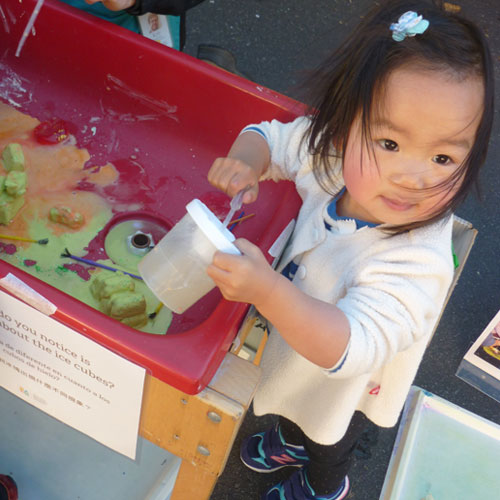Children will practice early chemistry skills by using pipettes and vinegar to melt and mix colored ice cubes.
Materials Required
- ¼ cup baking soda
- ¼ cup cornstarch
- ½ cup water
- liquid watercolor
- glitter (optional)
- large bowl
- spoon
- ice cube trays and/or freezable bowls/containers of varying sizes
- vinegar
- pipettes
- paint brushes
- large plastic tubs (4)
Instructions
- At least one day prior to doing the activity, let children help you combine the baking soda, cornstarch, water, liquid watercolor, and glitter (if using) in a large bowl. Pour the mixture into the ice trays and other containers, and freeze overnight.
- Make additional ice cubes using only water, others with baking soda and water, and others with cornstarch and water. Liquid watercolor and glitter can be added to all, some, or none of these.
- On the day of the activity, empty the frozen ice cubes into the large plastic tubs, separated by ingredients.
- Using pipettes and paintbrushes, children will drop vinegar onto the ice cubes and can explore color mixing as they melt.
- Support children to compare and contrast how each type of ice behaves as it mixes with the vinegar and begins to melt.
Additional Tips
Try these add-on activities:
- Use the ice cubes to design and build a building or city. For inspiration, investigate the Ice Hotel in Sweden, a real hotel built out of ice that is constructed anew every year.
- For older children, introduce iodine as an optional ingredient and watch how iodine mixed with cornstarch makes the color change.
- Introduce an assortment of additional kitchen ingredients and challenge children to make their own recipe for ice cubes, or for another exciting substance, like slime!


